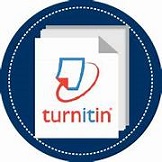| :: COLLABORATION WITH :: |
Manuscripts submitted to IHSAN: Journal of Islamic Education must be original works that have never been published or are under consideration elsewhere.
Manuscripts should be written in Microsoft Word format using Book Antiqua 12 pt, single spacing, on A4 paper size, with margins of 3 cm (top, left) and 2.5 cm (right, bottom).
The length of the manuscript is between 10–20 pages including tables, figures, and references.
The manuscript should follow the journal template available on the website.
Title: Maximum 16 words, written in Book Antiqua 14 pt bold, concise and informative.
Author(s) Name and Affiliation: Full names without titles, institutional affiliation, and active email addresses for correspondence.
Abstract: Written in English and Bahasa Indonesia, 150–250 words. It should include background, objectives, methods, results, and conclusion. Provide 3–5 keywords.
Introduction: Contains background, research problems, previous relevant studies (3–5 studies), research gap, and objectives.
Method: Clearly explains research design, data sources, participants or informants, instruments, data collection, and analysis techniques.
Results and Discussion: Presents research findings supported by data (tables, figures, diagrams) and discusses them with relevant theories and previous research.
Conclusion: Summarizes findings concisely and conceptually, in narrative form without numbering. May include suggestions for future research.
Acknowledgment (if any): Addressed to sponsors, funding bodies, or individuals who contributed significantly.
References: Written in APA style (7th edition) using reference managers (Mendeley/Zotero). At least 10 references (80% journal articles, 20% books), published within the last 10 years.
Manuscripts must be free from plagiarism. Similarity index should not exceed 25%.
All submissions will be checked using plagiarism detection software before being processed for review.
Authors must register and submit manuscripts via the journal’s official website.
There is no submission fee. An Article Processing Charge (APC) of USD 10 will be applied only after the manuscript is accepted for publication.
Naskah yang dikirimkan ke IHSAN: Jurnal Pendidikan Islam harus merupakan karya asli yang belum pernah dipublikasikan atau sedang dipertimbangkan di tempat lain.
Naskah ditulis dalam format Microsoft Word dengan Book Antiqua 12 pt, spasi tunggal, ukuran kertas A4, margin 3 cm (atas, kiri) dan 2,5 cm (kanan, bawah).
Panjang naskah antara 10–20 halaman termasuk tabel, gambar, dan daftar rujukan.
Naskah harus mengikuti template jurnal yang tersedia di situs web.
Judul: Maksimal 16 kata, ditulis dengan Book Antiqua 14 pt tebal, ringkas dan informatif.
Nama dan Afiliasi Penulis: Nama lengkap tanpa gelar, afiliasi institusi, dan alamat email aktif untuk korespondensi.
Abstrak: Ditulis dalam Bahasa Inggris dan Bahasa Indonesia, 150–250 kata. Berisi latar belakang, tujuan, metode, hasil, dan kesimpulan. Sertakan 3–5 kata kunci.
Pendahuluan: Berisi latar belakang, masalah penelitian, ringkasan penelitian terdahulu (3–5 penelitian relevan), kesenjangan penelitian, dan tujuan penelitian.
Metode: Menjelaskan desain penelitian, sumber data, partisipan atau informan, instrumen, teknik pengumpulan data, serta teknik analisis data.
Hasil dan Pembahasan: Menyajikan temuan penelitian yang didukung data (tabel, gambar, diagram) dan dibahas dengan teori serta penelitian terdahulu yang relevan.
Kesimpulan: Merangkum temuan secara singkat dan konseptual, disajikan naratif tanpa penomoran. Dapat disertai saran untuk penelitian selanjutnya.
Ucapan Terima Kasih (jika ada): Ditujukan kepada sponsor, lembaga pendanaan, atau pihak yang berkontribusi signifikan.
Daftar Rujukan: Ditulis dengan gaya APA edisi ke-7 menggunakan reference manager (Mendeley/Zotero). Minimal 10 rujukan (80% artikel jurnal, 20% buku) terbitan 10 tahun terakhir.
Naskah harus bebas dari plagiarisme dengan indeks kesamaan maksimal 25%.
Semua naskah akan diperiksa menggunakan perangkat lunak pendeteksi plagiarisme sebelum diproses ke tahap review.
Penulis wajib mendaftar dan mengirimkan naskah melalui situs resmi jurnal.
Tidak ada biaya pengiriman naskah. Biaya publikasi sebesar USD 10 hanya dibebankan setelah artikel dinyatakan diterima untuk diterbitkan.
| :: People :: |
| Editorial Team |
| Reviewers |
| Contact |
| :: Policies :: |
| Focus and Scope |
| Peer Review Process |
| Publication Frequency |
| Open Access Policy |
| Archiving |
| Posting Article Policy |
| Publication Ethics |
| Screening for Plagiarism |
| Withdrawal of Manuscript |
| Correction and Retraction |
| Article Processing Charge |
| Indexing and Abstracting |
| :: Submission :: |
| Author Guidelines |
| Reviewer Guidelines |
| Copyright Notice |
| Privacy Statement |
| Manuscript Template |

Ensure Similarity Index
Manuscript Maximum 30%


IHSAN : Jurnal Pendidikan Islam
Editorial Office of IHSAN : Jurnal Pendidikan Islam | Jalan Sederhana Lorong Lambang Sari No.959, RT 001 RW. 006, Kelurahan Tembilahan Hulu Kecamatan Tembilahan Hulu, Kabupaten Indragiri Hilir Provinsi Riau, Indonesia
Email : jurnalihsan@gmail.com  This work is licensed under a Creative Commons Attribution ShareAlike 4.0 International License.
This work is licensed under a Creative Commons Attribution ShareAlike 4.0 International License.
Design & Develop By : RYE EDUCATION HUB
